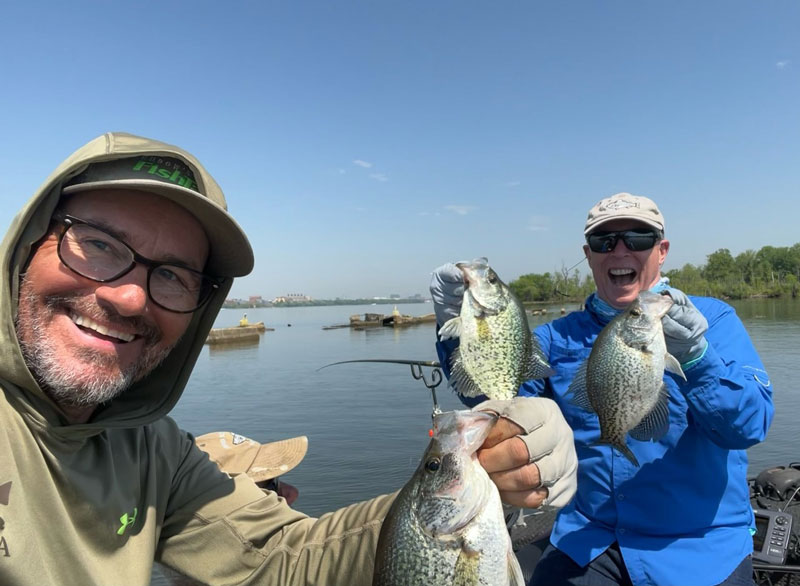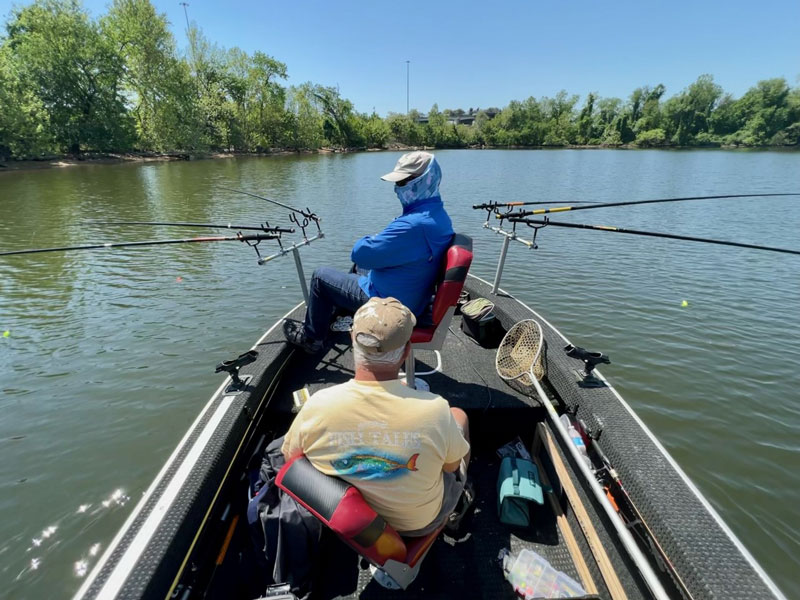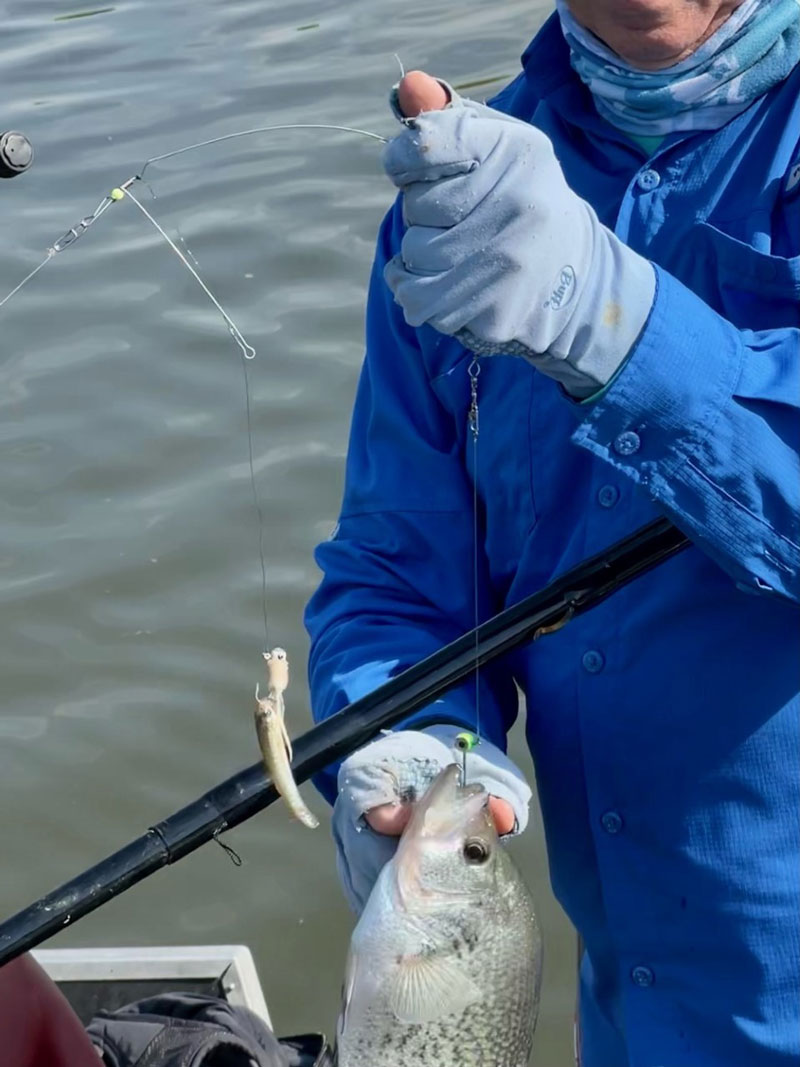A friend of mine, Dennis, had asked a few times if I’d like to do some crappie fishing on the Potomac River with him. But I always had some other commitment. So when I read a text from him saying “Final Offer, spider rig crappie fishing in Washington DC tomorrow morning,” I frantically adjusted my schedule and headed to the river the next morning.

Spider rigging would be, for me, a new type of fishing. The array of rods hanging off the boat gives this method of fishing its name, since the boat looks a lot like a water spider moving over the water’s surface once the rods are deployed. And it’s a great way to target big crappie. In fact, the average size crappie we’d end up catching that day were in the 12- to 14-inch range.
We launched from a small marina near Fort Washington then headed upriver just north of the Woodrow Wilson Bridge, fishing Maryland and District of Columbia waters, focusing on Oxen Creek Cove and the Spoils. Once there, we deployed our spidery equipment. We placed rod holders, each able to accommodate up to four rods, on each corner of the boat. Then we deployed a dozen 12-foot-long telescopic crappie fishing rods which didn’t have reels; just enough line is attached to the end of the rod to add a bobber with an additional five feet of line, capped off with two jigs on a weighted spreader arm. So, at any given time we had 24 baits in the water.

Spider rigging is a method used mostly in the south where regulations allow you to use any number of fishing rods per angler. Here in the Mid-Atlantic region we do have maximum numbers of rods and hooks in some of the different jurisdictions (hence our 12 rod total), so be sure to check the local regulations where you plan to fish before loading your boat up with dozens of rods.
The advantage of spider rigging is that you can fish multiple styles of jigs and baits as you drift about or slowly troll along with an electric motor. Once you start catching, take note of which color and style jig is being eaten so you can adjust your other baits. If you are fishing baits at varying depths see which get bites and make any needed adjustments.
The setup we used is one that Dennis came up with after a few years of crappie fishing on the Potomac. The boat has both bow and stern sonar units, so everyone in the boat can monitor what the boat has just passed over and can anticipate a bite, and everyone can see the fish below when sitting still. Some spider rigs are set up with rod holders only on the bow of the boat, with two anglers sitting beside each other watching the rods.
Dennis’s rig allowed us to have an additional angler and rods at the back of the boat. As we trolled, the rods on the front of the boat got bit more often than those on the back of the boat. But once a fish was on we looked at the sonar, and if there was a school under the boat, would stop trolling and monitor all 12 rods while drifting. Any number of them would get strikes and once the bite stopped, we resumed trolling.
The bait that got hit most was a 1/16th oz jig with a white twister tail tipped with a bull minnow, but you should plan to adjust to different types of baits throughout the day as the action picks up or drops off.

For this trip we were slow trolling. Once a bobber went down we would simply lift the rod up then net the fish using an extended handle landing net. The extended handle net is a must with these reel-less rods, making the job of landing a fish much quicker and easier.
You will want to keep a close eye on your bobbers. The rod, once bit, will normally take a quick pull towards the water with the bobber disappearing under the surface. But a bite may come in the very subtle form of a bobber moving in a different direction than the others. So, keep a keen eye out for any odd bobber behaviors.
Are you ready to try a new form of fishing? Head out to your favorite crappie hole, drop a few spidery lines overboard, and hold on for a fantastic day on the water.
- By Eric Packard
Spider Rig Gear List
Ready to try spider rigging? Here’s what you’ll need:
- Multiple-rod rodholders set to spread the rods as much as possible and hold them in a more or less horizontal fashion (sometimes called “T-Bars”).
- Telescopic crappie rods, 10’ to 14’ long when extended.
- Lengths of 12-pound test (often about as long as the rod itself).
- Spreader or tandem rigs tipped with one to two feet of eight- to 10-pound test and small jigs of varying colors and styles.
- Bobbers.
- Long-handled landing net (necessary because the long, limber rods with no reel can make it difficult to bring fish close to the boat).